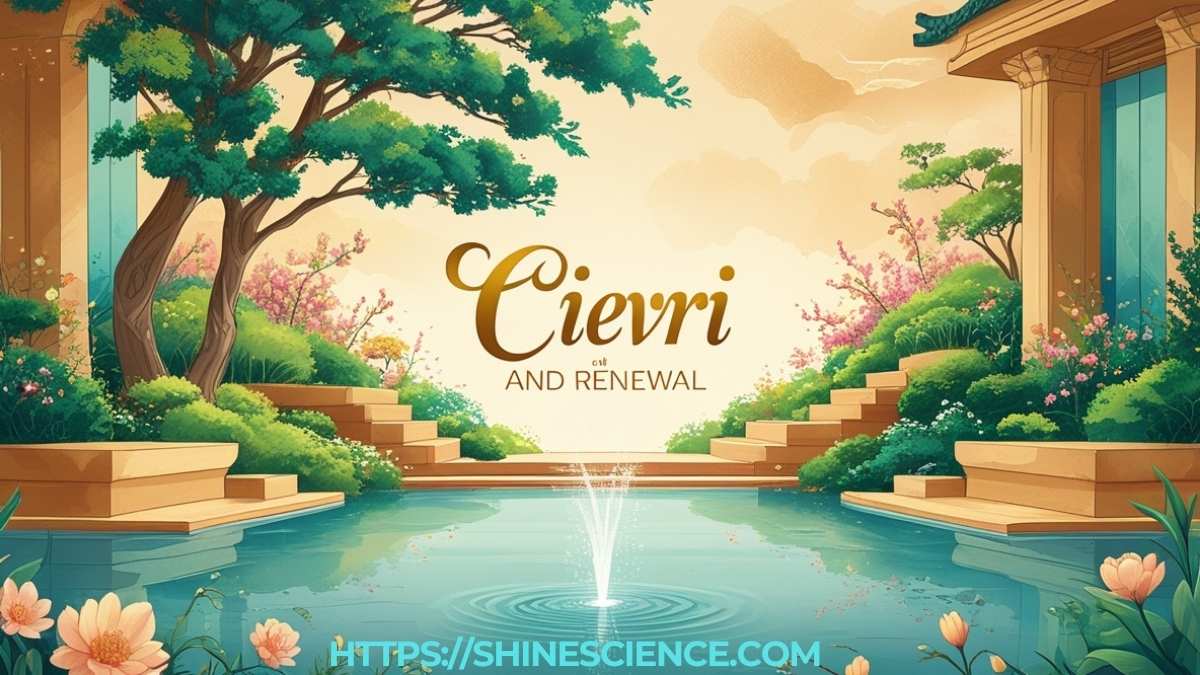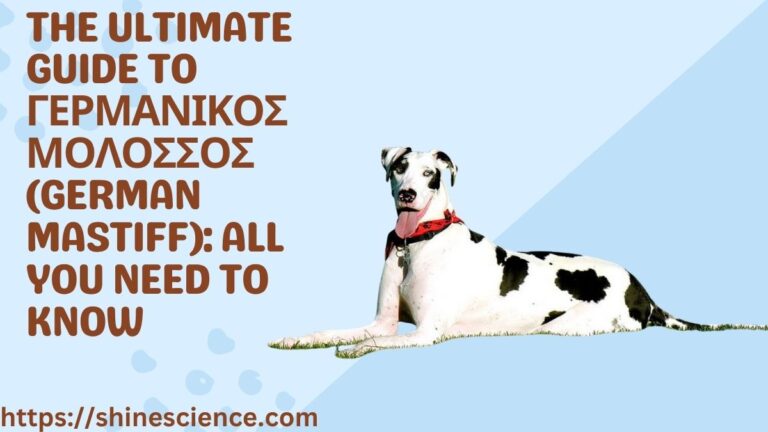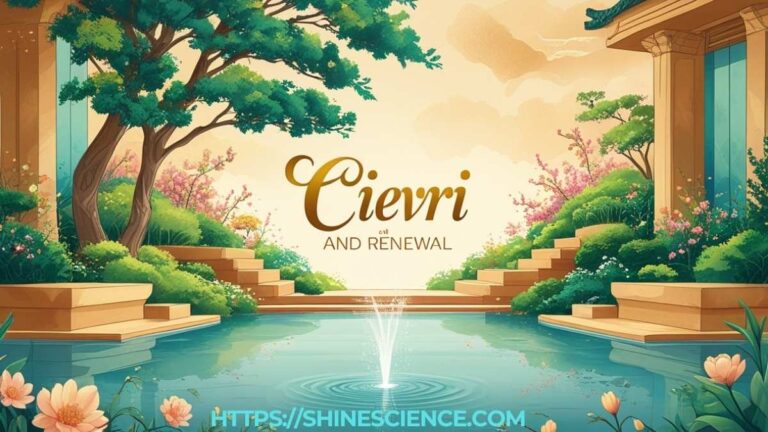
Introduction
In the midst of rapid change and constant growth, many of us are searching for something deeper—a rhythm that resonates with the way life really works. The concept of çievri offers exactly that: a reminder that everything moves in circles, renews itself, and connects us to something larger than our individual moment. While the word may seem unfamiliar, its message is timeless.
By exploring what çievri means, why it matters, and how you can bring it into your daily life, this article invites you on a journey of balance, culture, and sustainability. Whether you are interested in environmental health, personal growth, or community traditions, the principle of çievri offers practical and meaningful guidance.
What Does Çievri Mean?
The term çievri (pronounced roughly “chee-ev-ree”) comes from older Turkic or Anatolian roots and is increasingly used to describe the idea of a cycle, circle, or flow of energy and life.
While there is no one fixed definition, many writers suggest that çievri connects natural rhythms—like the seasons or water cycles—with human culture, traditions, and renewal.
In short, çievri is about movement that returns, transformation that gives back, and systems that maintain harmony rather than just consume endlessly.
Origins and Historical Roots
Scholars trace the roots of çievri to Turkic and Ottoman-era communities, where ceremonial gatherings or communal rituals often took circular forms—literally and metaphorically.
These rituals recognized that life is not just a straight line from A to B, but a network of flows and returns—birth, growth, decay, and rebirth. Over time, the idea evolved into a broader cultural and philosophical principle.
Why Çievri Matters Today
Embracing Natural Harmony
In nature, cycles are everywhere: the water cycle, seasons, the life of forests, animals, and human communities. The principle of çievri reminds us that disrupting these cycles comes at a cost—ecological imbalance, loss of biodiversity, or weakened social fabric.
When we live in line with cyclical rhythms—resting, renewing, acting—we align with what nature intends, rather than fighting the flow.
Strengthening Culture and Community
On the cultural side, the idea of çievri invites us to value traditions, rituals, and community connections that repeat and renew over time. For example, harvest festivals, family stories passed down, or seasonal practices all reflect this underlying cycle.
These practices are important because they anchor community identity and create a sense of continuity, which is increasingly needed in our fragmented world.
Guiding Sustainable Living
In a modern world obsessed with more, faster, and newer, the principle of çievri offers a counterbalance. It encourages us to design for renewal—whether that’s renewable energy, circular economy, or conscious consumption.
By applying the idea of cycles and flows rather than one-time use, we can create systems that last, regenerate, and reduce waste—a genuine shift toward sustainability.
How to Apply Çievri in Your Life
1. Observe Your Own Cycles
Begin by noticing your habits, rhythms, moods, and energy levels. Recognizing that you too move in cycles helps you plan your life more sustainably: when to rest, when to act, when to reflect.
Think of yourself as part of the çievri rather than against it.
2. Align with Nature’s Rhythms
Eat seasonal food, match your schedule to daylight when possible, spend time outdoors and reflect on the turning of the seasons. These small steps bring you into sync with nature’s flow.
By honoring natural cycles instead of battling them, you live more comfortably and sustainably.
3. Build Community Rituals and Traditions
Create or participate in traditions that repeat: family dinners on certain dates, community clean-ups, annual reminiscence sessions. These forms of communal çievri strengthen bonds and preserve cultural momentum.
Such rituals remind us that we are not alone and our lives are part of something bigger.
4. Design for Regeneration
Whether in business, personal projects, or home life, think in terms of reuse, repair, recycle. A çievri-inspired approach avoids the “use and discard” model and instead asks, “What renewal will come?”
Examples: Local gardens that replenish soil, energy systems that feed back into the grid, clothing swaps instead of fast fashion.
The Benefits of Living by the Principle of Çievri
- Greater resilience: When you see life as cyclical, setbacks feel less terminal—they are part of a process of renewal.
- Stronger connection: Engaging with traditions and natural rhythms increases your sense of belonging and meaning.
- Enhanced sustainability: You consume in rhythm with what is available and give back rather than take without return.
- Balanced well-being: Recognizing when to act and when to rest helps maintain mental, physical, and emotional health.
Common Misunderstandings about Çievri
- It’s not rigid or fixed. Çievri is not about following a strict set of rules; it’s about being aware of cycles and flows.
- It’s not ancient only. While rooted in tradition, the principle of çievri is highly relevant today—in technology, in design, in urban planning.
- It’s not passive. Embracing cycles doesn’t mean doing nothing—it means acting at the right time, renewing what you use, and participating consciously.
Questions to Reflect On
- What patterns of renewal exist in your life?
- Where might you be stuck in a linear mindset rather than a cyclical one?
- How could you introduce a small ritual or habit that honors a cycle instead of constant pushing forward?
- In your consumption, work, and relationships—how can you give back, replenish, and connect rather than merely take?
Frequently Asked Questions (FAQs)
Q1: What does “çievri” literally mean?
A1: While there’s no exact single translation, çievri is used to describe a circle, cycle, or flow in life and nature.
Q2: How does çievri relate to sustainability?
A2: It relates strongly: by viewing resources, systems, and life itself as cyclical rather than linear, you aim for renewal, regeneration and less waste.
Q3: Can this idea be applied in everyday life and business?
A3: Absolutely. Everyday actions like following seasonal foods, designing products for reuse or creating community rituals reflect the principle of çievri.
Q4: Is çievri only a cultural or spiritual concept?
A4: While it has cultural and spiritual roots, its application spans environment, economy, personal growth and community life. It’s practical as well as philosophical.
Q5: How can I start embracing çievri today?
A5: Start small: pick a habit you redirect toward renewal (e.g., composting, reusing, a community meet-up), notice your own cycles, and slowly shift your mindset from “use and discard” to “use-renew-repeat.”
Conclusion
In a world that prizes speed, growth and breaking new ground, the principle of çievri offers a grounded counterpoint—one that acknowledges the power of cycles, renewal and connection. By integrating this mindset into how we live, work, and relate, we tap into deeper rhythms of nature, culture and self.
Whether you’re exploring sustainable living, seeking personal balance, or looking to strengthen your community, embracing çievri opens doors to meaning and resilience. The journey may begin quietly, but the ripple effect reaches far: in your life, your surroundings, and the shared world we all inhabit.




